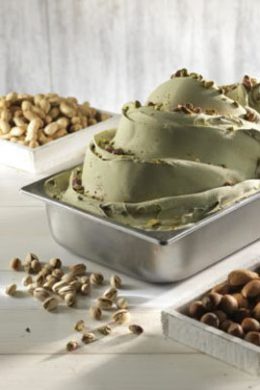What is good gelato?
Ice cream and sorbet are delicious but they don’t match the experience of gelato in many ways. The creamy milky based varieties, the intense chocolate kind, fruit based, traditional and modern flavors and mash ups.
From appearances alone, ice cream and gelato have stark differences even with unique gelato display cases. Ice cream is scooped up in round shapes and each scoop is layered to close the gaps in between. Gelato is smoother in its finish, thus allowing each layer to stack up easier in a cup. Gelato tends to appear like waves when placed on display and its dense, smooth nature lets you stretch the gelato from your cup, and into your spoon. But these are only at the surface—for the more discerning palate, what is the secret or the science behind gelato’s consistent flavor and ice cream’s airier feel on the tongue?
Gelato uses milk, and is usually only made up of four to eight percent fat.
 The word gelato translates to “frozen” in Italian, while ice cream indicates the use of an emulsifier like cream or milk. Ice cream uses emulsified ingredients or an emulsifying fat in its base to keep the crystals formed by frozen water as small as possible. Gelato uses milk, and is usually only made up of four to eight percent fat. But just like ice cream, gelato also has water that freezes. To balance out the crystals that form from water freezing, gelato adds more milk to increase the solids and doesn’t need to use extra sugar to prevent crystallization. Thus, gelato has less fat compared to ice cream.
The word gelato translates to “frozen” in Italian, while ice cream indicates the use of an emulsifier like cream or milk. Ice cream uses emulsified ingredients or an emulsifying fat in its base to keep the crystals formed by frozen water as small as possible. Gelato uses milk, and is usually only made up of four to eight percent fat. But just like ice cream, gelato also has water that freezes. To balance out the crystals that form from water freezing, gelato adds more milk to increase the solids and doesn’t need to use extra sugar to prevent crystallization. Thus, gelato has less fat compared to ice cream.
Gelato is churned at a slower speed, so it has less air in its base, which results to a denser, smoother texture.
The main difference, however, lies in the amount of air. Both ice cream and gelato’s volumes are made up of air, and the amount of air is referred to as the ’overrun’. Commercial ice creams have a 50% overrun, while the more expensive brands have less at 25%. Gelato is churned at a slower speed, so it has less air in its base. What results is a much denser base compared to ice cream, also resulting in a smoother texture.
Gelato stores have popped up in most malls, but only a handful of people are convinced of gelato’s superiority over ice cream. Perhaps it’s not a question of which is better, but what the palate should be looking for when you’ve opted for Italy’s version of ice cream. Gelato isn’t just defined by its chemical process and composition: there’s also a difference in how it’s made, from the recipes to commercial gelato machines, or churn machines between how the more commercial brands are made, compared to the artisanal.
Learn to make great gelato at our artisan gelato courses.







